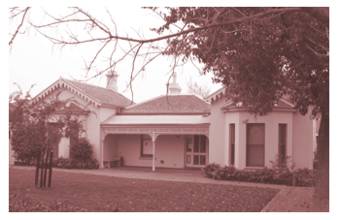"The Nest " or "Netley House", Balaclava Road, Caulfield
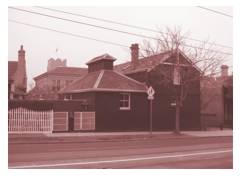 Start at the gates of Mebourne Grammar's Grimwade House on the Orrong Road corner and walk east along Balaclava Road until you come to a double story slate-roofed building abutting the footpath. This was originally the gatehouse of "Harleston", the Grimwade family mansion that is now the core of the school. Continue on to the end of the school fence and peer over. A short distance back is "Netley House" which for a time served as the Principal's residence.
Start at the gates of Mebourne Grammar's Grimwade House on the Orrong Road corner and walk east along Balaclava Road until you come to a double story slate-roofed building abutting the footpath. This was originally the gatehouse of "Harleston", the Grimwade family mansion that is now the core of the school. Continue on to the end of the school fence and peer over. A short distance back is "Netley House" which for a time served as the Principal's residence.
In 1869 this was the birthplace of my great grandfather Herbert Shaw. His father, Alfred Henry Shaw, an ironmonger and hardware proprietor, was one of the many businessmen and professionals who in the 1860s moved from the inner city to this area on what was then the rural outskirts of Melbourne. The exact date of his move is unconfirmed but by 1863 Alfred Shaw, after what may have been a lengthy property settlement, held the title to a 5 acre block where Netley House now stands. The first mention I could find of a house on the block was an 1865 mortgage which refers to "the brick dwelling house and outbuildings .... now in the occupation of ... Alfred Shaw".
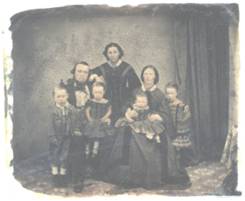 There are some strong indications that Alfred and family were the first occupiers of the block and that "Netley House" may have been built for them as early as 1859. The Sands & McDougall directory shows Alfred Shaw resident in Balaclava Road East from 1863 to 1870 but gives only his business addresses prior to this. His first son was born in 1858 at 260 Elizabeth Street which seems to have served as both residence and business premises. By 1860, the business had moved to 234-236 Elizabeth Street.
There are some strong indications that Alfred and family were the first occupiers of the block and that "Netley House" may have been built for them as early as 1859. The Sands & McDougall directory shows Alfred Shaw resident in Balaclava Road East from 1863 to 1870 but gives only his business addresses prior to this. His first son was born in 1858 at 260 Elizabeth Street which seems to have served as both residence and business premises. By 1860, the business had moved to 234-236 Elizabeth Street.
The births of the next three children indicate that the family had moved away from the city. Arthur (1859) and Amelia (1861) were born in “St Kilda” and Lavinia (1862), “Caulfield”. With the Caulfield Road District only declared in 1857 it is likely that for a number of years afterwards the Netley House area would still have been referred to as "St Kilda" for birth registration purposes and this seems to be the case with the birthplaces of Alfred's children born after 1863 with Balaclava Rd being variously located in Caulfield or E. St. Kilda. Certainly the S&M directory uses "St Kilda" for the address until 1870. The earlier land title information also supports the case for Alfred being the first occupier, consisting as it does of only transactions involving various partnerships of the original Crown Grantee, William Forsyth.
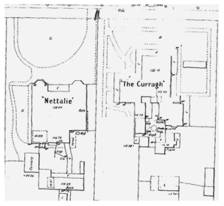 In 1864 Alfred Shaw sold the eastern part of the block to a Mary Blundell who in 1869 sold it to John Fosbery. Board of Works plans from around 1900 show what was most probably his home, "The Curragh", at 73-75 Balaclava Road. It is worth noting that from 1866 to 1869 Alfred also owned the five acre block on which "Harleston" was built in 1875. The previous owner was John Bakewell who had owned it from 1856 when he purchased it from the original grantee, George B Hailes (who at that time would have just dissolved his partnership with Thomas Hale). I have found no evidence to suggest that there was a house on that block prior to "Harleston".
In 1864 Alfred Shaw sold the eastern part of the block to a Mary Blundell who in 1869 sold it to John Fosbery. Board of Works plans from around 1900 show what was most probably his home, "The Curragh", at 73-75 Balaclava Road. It is worth noting that from 1866 to 1869 Alfred also owned the five acre block on which "Harleston" was built in 1875. The previous owner was John Bakewell who had owned it from 1856 when he purchased it from the original grantee, George B Hailes (who at that time would have just dissolved his partnership with Thomas Hale). I have found no evidence to suggest that there was a house on that block prior to "Harleston".
Next door neighbour Mary Blundell may very well have been one of the "Misses Blundell" who took over the school, Shelford, in 1905. Although the school wasn't opened until 1898, in the 1860s the Shaws would have been able to stand at the rear of their house and look down across the open countryside to "Helenslea", the mansion home of barrister Sir George Stephen. This house was in the 1920s to become part of that school. It is not known how the young and "self-made" Alfred Shaw got on with Sir George who was described as "... rather reactionary. He deplored the colony's democratic, egalitarian spirit. He expressed his disapproval of the lack of any aristocracy of wealth, power or rank, and the lack of tone or manners among even the wealthy and socially accepted". [Solomon p63]
Moving to the front veranda of his home, Alfred could have looked up and across the muddy track that was Balaclava Road to "Sylliot Hill", the then recently built home of another eminent barrister, Richard Billings, "... a man of refined literary tastes, fond of good music and never happier than when entertaining persons who excelled in the operatic or dramatic arts". Sylliot Hill, much expanded by subsequent owners, is now the National Trust's "Labassa".
The name of “Netley House” has evolved over the years. “Netley” seems only to appear in later Melbourne Grammar sources. “Nettalie” is the spelling used on a 1901 MMBW plan and also appears on a burial entry for Martha Ware who died there in 1914. According to the Caulfield Conservation Study the house was known as "Nettalie" by 1899 but it likely that this is also a misspelling of an earlier name. Alfred Desailly who owned the house between 1883 and 1886 was a squatter who also owned "Netallie" station in the Wilcannia region of New South Wales, where in 1880 his daughter Constance had married Edward Bulwer Lytton Dickens, the son of the author Charles Dickens.
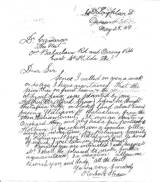
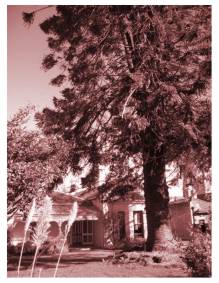 An even earlier name is provided by a 1949 letter written by Herbert Shaw to Dr. William Cameron who owned the house from about 1920 until Melbourne Grammar bought it in 1954. He addresses the letter to ' "The Nest", Cnr. Balaclava Rd and Orrong Rd '. Was this the name from his time or just a reference to it being his birthplace and that of most of his siblings?
An even earlier name is provided by a 1949 letter written by Herbert Shaw to Dr. William Cameron who owned the house from about 1920 until Melbourne Grammar bought it in 1954. He addresses the letter to ' "The Nest", Cnr. Balaclava Rd and Orrong Rd '. Was this the name from his time or just a reference to it being his birthplace and that of most of his siblings?
In the same letter Herbert refers to the "pine on the front lawn and the magnolia at the front fence" as being planted by his father in the 1860s. The pine is almost certainly the Bunya Bunya tree that until 2004 stood in the centre of the front garden. In July 2006 there was a Magnolia on the front fence but it didn't seem 50 years old let alone 150. All the same there may be some connection.
In the years the Shaw family lived in the house a number of mansion homes had been built in the surrounding area but vast tracts especially to the east were still essentially rural. Transport must have been a problem. Even the relatively short trip to Balaclava station may have been difficult when the road turned to little more than a muddy track. By 1870 Alfred's business was doing well, so with eight children with another not far away Alfred started looking for something more substantial. Shortly afterwards the family was living in William Street, Balaclava.
